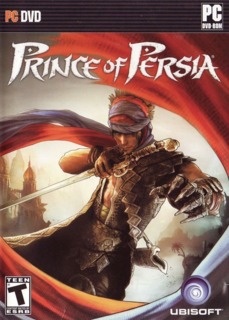A series re-invention that really wasnt necessary
The prince is painted as a loveable rogue, but comes across as goofy and childish, with some truly awful dialogue. In motion, he's more memorable, even if the controls are blatantly lifted from Assassins Creed. This does take some adjustment, and like that game, you never get the feeling of being totally in control of whats happening on screen. Jumps dont even have to be timed well. There is a nice selection of new moves however, including a ceiling run, and a grip fall ability, which allows the prince to freefall down most vertical surfaces.
Amongst the many changes, the Sands of Time mechanic has been removed. In its place is an unlimited lives system, as Elika rescues you after every fail. This removes much of the challenge; and appreciation of the tight level design is lost somewhat by the stop start gameplay. Furthermore, watching the same rescue cut scene gets boring fast. Another overhaul is the combat system. This release has opted for a cinematic approach, with sweeping views and a more dramatic feel. Multiple enemy battles are out, replaced by a one on one system. Yet, more often than not these become battles of attrition, with poor skills only prolonging the battle. Rather than deepening the system, combat feels simplified, and with much less variety. Boss battles are also shamelessly recycled. Failure at anything just prompts Elika to rescue you. Once again. This hand holding approach is sure to split opinions, but it can all become tedious, especially with the inclusion of QTE's.
More repetition sets in elsewhere. Each section of the open-world map has to be 'healed'. This involves travelling there, defeating a monster, then hammering a QTE until the land is healthy again. This causes light seeds to appear, which need collecting in order to advance to new sections of the map. Repeat until credits roll.
Overall, a disappointing entry for a classic franchise.

